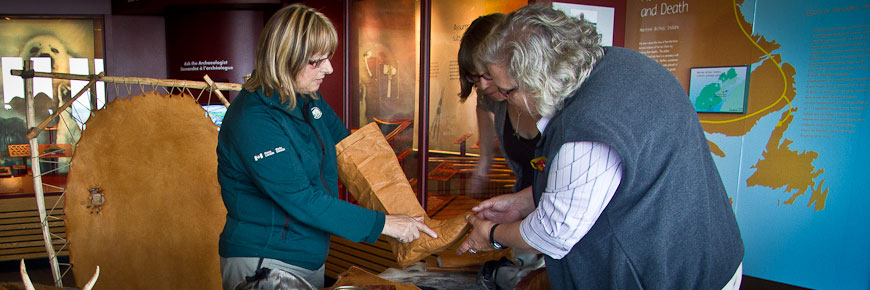
Stewardship and management
Port au Choix National Historic Site
In 1904, bone, stone and ivory artifacts were uncovered by chance by a local in Port au Choix. The unusual alkaline quality of the limestone bedrock helped preserve many organic objects like bone and antler. The area would become one of the richest archaeological discoveries in North America.
As the decades unfolded, archaeologists unearthed a mass of prehistoric bones, tools and weapons, from stone axes to bone carvings, as well as three ancient cemeteries.
Port au Choix has been inhabited by four ancient cultures for thousands of years, including the Maritime Archaic people, Dorset people and Groswater people, and Recent Indigenous groups. They lived by the ocean’s riches long before Europeans arrived in the 16th century.
Walk to Phillips Garden, a meadow where 2,000 years ago, hunters had open views of the bay as harp seals passed close to shore on iceflows. Arriving around March and April ready to pup, the Dorest hunters would have simply walked out on the ice to catch their prey. So much seal oil has remained in the ground that the archaeologists say that even after 600 years, the soil still has a greasy feeling. Phillips Garden Trail leads to over 50 semi-subterranean dwellings. The area is now one of the richest Dorset archaeological sites in the Canadian Arctic.
Learn about the domestic, hunting and ritual practices of these cultures, through interactive exhibits, a film, and original artifacts from stone-and-bone tools to exquisite carvings, in the Visitor Centre. The Dorset Trail cuts through dramatic limestone barrens, featuring rare botanical species, fossils, and Dorset burial caves. The barrens are home to more than one hundred rare plants, including the yellow lady slipper orchid and the endangered Fernald’s braya, which grows nowhere else on earth.
- Date modified :